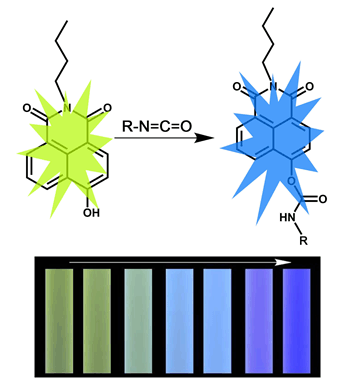| [1] Xuan, L. M. S. Thesis, North China University of Science and Technology, Tangshan, 2015(in Chinese). (宣靓, 硕士论文, 华北理工大学, 唐山, 2015.)
[2] Tang, Y. F. M. S. Thesis, Anhui Jianzhu University, Hefei, 2013(in Chinese). (唐燕飞, 硕士论文, 安徽建筑大学, 合肥, 2013.)
[3] Spindler, R.; Frechet, J. M. J. Macromolecules 1993, 26, 4809.
[4] Xie, W.-Q.; Chai, X.-S. J. Chromatogr. A 2016, 1468, 241.
[5] Kubitz, K. A. Anal. Chem. 1957, 29, 814.
[6] Kormos, L. H.; Sandridge, R. L.; Keller, J. Anal. Chem. 1981, 53, 1122.
[7] Budnik, L. T.; Nowak, D.; Merget, R.; Lemiere, C.; Baur, X. J. Occup. Med. Toxicol. 2011, 6, 9.
[8] Coldwell, M.; White, J. UK Health and Safety Laboratory, Buxton, 2005.
[9] Agarwal, B.; Jurschik, S.; Sulzer, P. Rapid Commun. Mass Spectrom. 2012, 26, 983.
[10] Andre, C.; Jorge, F.; Castanheira, I.; Matos, A. J. Chemometr. 2013, 27, 91.
[11] Karlsson, D. Anal. Chim. Acta 2005, 534, 263.
[12] NIOSH Pocket Guide to Chemical Hazards and Other Databases. DHHS(NIOSH) Publication No. 2001-145(2001).
[13] Skarping, G.; Renman, L.; Smith, B. E. F. J. Chromatogr. A 1983, 267, 315.
[14] Sharping, G.; Sango, C.; Smith, B. E. F. J. Chromatogr. A 1981, 208, 313.
[15] Dunlap, K. L.; Sandridge, R. L.; Keller, J. Anal. Chem. 1976, 48, 497.
[16] Gagne, S.; Lesage, J.; Ostiguy, C.; Van Tra, H. Analyst 2003, 128, 1447.
[17] Warwick, C. J.; Bagon, D. A.; Purnell, C. J. Analyst 1981, 106, 676.
[18] Ghosh, K. R.; Saha, S. K.; Gao, J.-P.; Wang, Z.-Y. Chem. Commun. 2014, 50, 1886.
[19] Gao, Z.-Z.; Han, B.-C.; Chen, K. Chem. Commun. 2017, 53, 6231.
[20] Chen, Q.; Bian, N.; Cao, C.; Qiu, X.-L.; Qi, A.-D.; Han, B.-H. Chem. Commun. 2010, 46, 4067.
[21] Li, Q.-Q.; Li, Z. Adv. Sci. 2017, 4, 1600484.
[22] Chen, J.; Zhang, C.-H.; Lv, K.; Wang, H.; Zhang, P.-S.; Yi, P.-G.; Jiang, J.-H. Sensor. Actuat. B 2017, 251, 533.
[23] Daniela, G.; Alicia, V. V.; Denis, B.; Angel, G. B. J. Nanophotonics 2018, 12, 012505.
[24] Zhang, G.-X.; Hu, F.; Zhang, D.-Q. Langmuir 2015, 31, 4593.
[25] Sun, C.-L.; Teng, K.-X.; Niu, L.-Y.; Chen, Y.-Z.; Yang, Q.-Z. Acta Chim. Sinica 2018, 76, 779(in Chinese). (孙才力, 滕坤旭, 牛丽亚, 陈玉哲, 杨清正, 化学学报, 2018, 76, 779.)
[26] Wang, J.; Wu, Y.-L.; Sun, L.-H.; Zeng, F.; Wu, S.-Z. Acta Chim. Sinica 2016, 74, 910(in Chinese). (王俊, 武英龙, 孙立和, 曾钫, 吴水珠, 化学学报, 2016, 74, 910.)
[27] Liu, Z.; He, W.; Guo, Z. Chem. Soc. Rev. 2013, 42, 1568.
[28] Valeur, B.; Leray, I. Coord. Chem. Rev. 2000, 20, 3.
[29] Zheng, X.-J.; Zhu, W.-C.; Liu, D.; Ai, H. Appl. Mater. Interfaces 2014, 6, 7996.
[30] Lin, H.-H.; Chan, Y.-C.; Chen, J.-W. J. Mater. Chem. 2011, 21, 3170.
[31] Leng, B.; Jiang, J.-B.; Tian, H. AlChE J. 2010, 56, 2957.
[32] Kai, Y.-M.; Hu, Y.-H.; Wang, K.; Zhi, W.-B.; Liang, M.-M.; Yang, M. Spectrochim. Acta A 2014, 118, 239.
[33] Zhang, H.-F.; Liu, T.; Yin, C.-C.; Wen, Y.; Chao, J.-B.; Zhang, Y.-B.; Huo, F.-J. Spectrochim. Acta A 2017, 174, 230.
[34] Li, B.; Yu, Y.-L.; Xiang, F.-Q.; Zhang, S.-Y. Appl. Mater. Interfaces 2018, 10, 16282.
[35] Guo, B.-P.; Pan, X.-Z.; Liu, Y.-F.; Nie, L.-X.; Zhao, H.-Z.; Liu, Y.-Z.; Jing, J.; Zhang, X.-L. Sensor. Actuat. B-Chem. 2018, 256, 632.
[36] Zhang, Z.; Fan, J.-L.; Zhao, Y.-H.; Kang, Y.; Du, J.-J.; Peng, X.-J. ACS Sens. 2018, 3, 735. |
